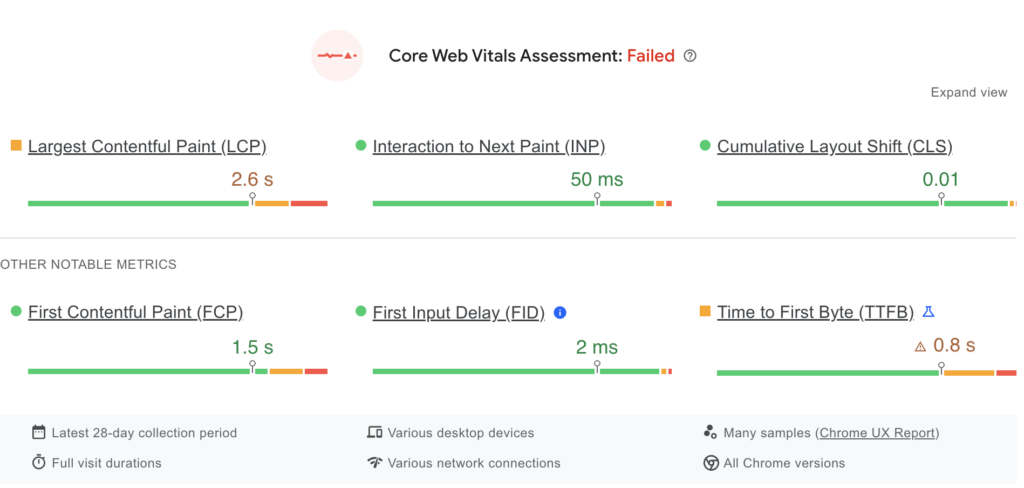UX in Crypto is a well-known Barrier to Mass Adoption, How can SEO Help to Minimise These Barriers to Entry? As all journeys currently start with a search engine or web2 property – minimising issues and adoption of your dApp or protocol will play a huge role in building your user base.
In need of a Crypto SEO Agency? Let’s talk.
Introduction: Defining UX and SEO for Web3 and Crypto Projects
User Experience (UX) and Search Engine Optimisation (SEO) are crucial for the success of any digital project, including those in the burgeoning fields of Web3 and cryptocurrencies. UX focuses on creating seamless and engaging interactions for users, while SEO ensures that a website is discoverable and ranks well in search engine results. In the context of Web3 and crypto projects, these elements are essential for attracting and retaining users, driving adoption, and maintaining visibility in a competitive market.
Relevance and Importance
As digital properties advance and factor in more web3 elements such as decentralised applications (dApps), wallets, account abstraction and so on understanding the interplay between UX and SEO becomes more critical. These projects often involve complex concepts that can be intimidating to users, making intuitive design and effective search strategies vital for user engagement and growth. By prioritising UX and SEO, Web3 and crypto projects can enhance user satisfaction, increase adoption rates, and achieve long-term success.
Web3 Projects Types and Experiences

As Web3 Grows, as do projects becoming available for new audiences. Given much technology is forked, the main differentiators lie in your project’s marketing, UX and overall experience.
DeFi Platforms:
Fast-paced trading, lending, borrowing etc. UX plays a leading role for a DeFi platform and is something that a user will engage with frequently to use your product. Understanding data points across engagement, leveraging Crypto SEO, retention and behaviour can inform updates to your platform and provide a better experience for your users.
NFT Marketplaces:
Platforms for creating, buying, and selling digital assets – as with a DeFi platform, user experience plays a role in how users trade, collect, view their assets and transactions etc.
DAOs:
Organisations governed by smart contracts and community votes. A good user experience will ease the review of new proposals, community interaction and overall engagement of your DAO.
DApps:
Applications running on blockchain networks, offering various services from gaming to social media. dApps are at the heart of the progression to an open internet, as such, providing users with a memorable experience will help retain and grow web3.
Symptoms and Signs
Indicators of Poor UX in Web3 and Crypto Projects
- High Bounce Rates: Users leaving the site quickly without completing an event or becoming an engaged sessions, indicating frustration or confusion.
- Low Engagement: Minimal interaction with the site’s features or content, no events or valuable interactions with your site.
- User Complaints: Feedback highlighting difficulties in navigation or understanding – very common in complex web3 dApps and platforms.
Signs of Ineffective SEO
- Low Search Engine Rankings: Poor visibility on search engine results pages, low impressions and visibility for your website/app.
- Decreased Organic Traffic: Fewer visitors arriving through search engines – this can be caused by several factors, however user engagement is a well-known factor.
- Poor Keyword Performance: Target keywords not driving significant traffic, understanding your ranking, positions and held keywords can inform your marketing efforts.
Causes and Risk Factors

UX Challenges in Web3 and Crypto Projects
- Complexity of Concepts: Difficulty in explaining blockchain technology and its applications, many are unfamiliar with initial concepts such as wallets and block explorers etc.
- User Education: Lack of accessible resources to help users understand the platform, resources spread across multiple platforms (Medium, Discord, etc.)
- Technical Barriers: Complicated processes for transactions and interactions, many processes can be time-consuming and risky for many users.
SEO Challenges
- Rapidly Changing Algorithms: Search engines frequently update their ranking criteria, recently Google’s leaked algorithm shows this.
- High Competition: Numerous projects vying for visibility in a crowded market, many are forked and contain the same core technology – standing out requires effort.
- Regulatory Changes: Legal updates affecting content and keyword strategies, this especially a concern for paid media and social networks.
Diagnosis and Tests
Evaluating UX
- User Testing: Observing real users interacting with the platform to identify pain points, many tools will collect real user data (field data) alongside estimations. Creating beta test groups can inform your initial stage and early designs.
- Heat-maps: Analysing areas where users click, scroll, or hover most frequently, tools such as HotJar can reveal user behaviour, and even eye-tracking.
- User Feedback Surveys: Collecting direct input from users about their experiences, collecting qualitative data from user experiences.
- A/B & Multivariate Testing: Conducting A/B tests and sending audiences to different experiences to see which converts best, and developing multiple experiences for users based on criteria.
Assessing SEO Effectiveness
SEO metrics have a direct impact on UX & performance, a study by Deloitte titled ‘Milliseconds Make Millions‘ outlined that a 0.1 second difference in mobile speed led to the following:
- Mobile site speed improvements had a direct correlation to improved funnel progression.
- A positive change in the number of page views, conversion rates and average order value across all verticals.
- Retail conversions increased by 8.4% and average order value increased by 9.2%.
- Travel conversions increased by 10.1% and average order value increased by 1.9%.
- Luxury brand page views per session increased by 8.6%.
- Lead generation information pages bounce rate improved by 8.3%
While Web3 and crypto are yet to be included in such a study, the natural progression of wider adoption infers that a better experience = better conversions.
Tools to Establish Benchmarks and Areas of Improvement
Tools, such as GTMetrix, Google Page Speed and others can help paint clear pictures of areas to be improved, pairing this with your analytics can show a direct correlation of performance to behaviour.
While these of course are to be seen as improvements, testing and iterating is always beneficial, with the ability to asses performance on authenticated and lower-level staging environments, this can flag issues before your site rolls to production and goes live.

- Keyword Analysis Tools: Using tools like Google Keyword Planner to track keyword performance.
- SEO Audits: Comprehensive reviews of the site’s SEO health, including on-page and off-page factors.
- Analytics Platforms: Leveraging Google Analytics to monitor traffic, user behaviour, and conversions.
- Site Speed Audits: Google announced that site speed is a heavily-weighted factor in their algorithm, and now utilise Core Web Vitals to rank a website’s performance – directly linked to UX.
Treatment Options
Improving UX for Web3 and Crypto Projects
- Simplified Interfaces: Designing clean, intuitive interfaces to enhance usability.
- Educational Content: Creating guides, tutorials, and FAQs to help users understand the platform and making them easily discoverable for users.
- Responsive Design: Ensuring the site is accessible on all devices, from desktops to smartphones.
Enhancing SEO
- On-Page Optimisation: Using meta tags, alt texts, and keyword-rich content to improve visibility. Considering UX optimisations denoted by Google.
- Content Marketing: Publishing valuable, relevant content to attract and engage users.
- Link Building: Acquiring backlinks from reputable web3 sites, outlets and media to boost search engine rankings.
Preventive Measures
UX Strategies
- Continuous Testing and Iteration: Regularly testing and updating the platform based on user feedback.
- User-Centered Design: Prioritising user needs and preferences in the design process, harnessing data to reinforce your hypotheses.
- Accessibility Standards: Adhering to web accessibility guidelines to ensure inclusivity.
SEO Best Practices
- Staying Updated with SEO Trends: Keeping up with changes in search engine algorithms and best practices.
- Regular Content Updates: Ensuring content remains relevant and up-to-date, updating existing, inaccurate content or docs.
- Monitoring Analytics: Continuously tracking performance metrics to identify areas for improvement.
Conclusion
Summary of Key Points
User experience and search engine optimisation are pivotal for the success of Web3 and crypto projects. By focusing on simplified design, user education, and effective SEO strategies, these projects can overcome common challenges and thrive in a competitive landscape.
Need SEO Support?

At ColdChain, we provide Web3 SEO Marketing to optimise your crypto SEO, or Web3 project’s visibility, engagement, and growth in the space. Our team specialises in Crypto SEO, leveraging well-established marketing techniques and strategies specifically for crypto & web3 projects.
Book a Free Consultation!
Let’s talk. Complete the form below and we’ll come back to you ASAP.



